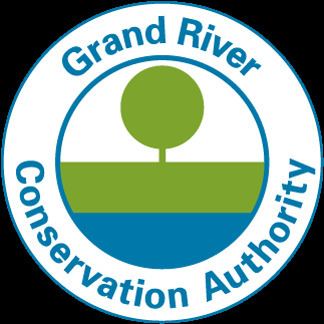Area served Grand River Watershed Founded 1932 | Website www.grandriver.ca | |
 | ||
Focus Manage the water and other natural resources in the Grand River Watershed | ||
Grand river conservation authority client highlight
The Grand River Conservation Authority (GRCA) is a conservation authority in Ontario, Canada. It operates under the Conservation Authorities Act of Ontario. It is a corporate body, through which municipalities, landowners and other organizations work cooperatively to manage the Grand River watershed and natural resources within it.
Contents
- Grand river conservation authority client highlight
- Member s statement may 3 2013 grand river conservation authority
- History
- References
Created in 1932, the GRCA is the oldest water management agency in Canada. It is one of 36 conservation authorities in Ontario and is a member of Conservation Ontario.
The GRCA also owns and manages many conservation areas, parks and trails within the watershed.
Member s statement may 3 2013 grand river conservation authority
History
The Grand River provided transportation, water supply, and waterpower attracting settlement to the valley in the 19th century. The combined deforestation and urban settlement aggravated flood and drought conditions.
A main part of the Grand River's course flows through the Carolinian life zone, which contains a southern type of forest that is found only in this area of Canada. A wide variety of rare plants and animals are found here.
The water quality in the river started to deteriorate to the point where it was a major public health concern. To deal with these problems, a group of eight municipalities came together in 1934 to form the Grand River Conservation Commission. The Commission completed the Shand Dam, the first multi-purpose dam in Canada in 1942. It was built for flood control and the low flow augmentation to improve water quality during the dry summer months. The Commission also started planting trees to re-vegetate the landscape along the river.
Prior to World War II, renewable natural resources were exploited to encourage economic and industrial expansion and growth. As a result of public concern over the state of the environment in Ontario, the Province passed the Conservation Authorities Act, 1946. The Act was based on three main principles:
The Grand River Conservation Authority is a corporate body established to enable municipalities to jointly undertake water and natural resource management on a watershed basis - for the benefit of all.
The broad goal of all conservation authorities in Ontario is specified in Section 20 of the Conservation Authorities Act:
The objects of the Authority are to establish and undertake in the area over which it has jurisdiction, a program designed to further the conservation, restoration, development and management of natural resources other than gas, oil, coal and minerals. (RSO 1990, c. 27)
Under the terms of the Act, the Grand Valley Conservation Authority was formed in 1948. This allowed all watershed municipalities to work collaboratively to address a broad range of resource management issues.
The practicality of two conservation organizations operating in the same watershed was closely scrutinized in the 1960s. To avoid potential conflict over roles and responsibilities and to eliminate duplication of programs the Grand River Conservation Authority was established in 1966 through the amalgamation of the Grand River Conservation Commission and the Grand Valley Conservation Authority.
